ReservationSearch and reserve rooms
Click here to confirm, change or cancel your reservation
Shinkansen accommodation plan
提携法人専用予約
2024.11.30
Enjoy cherry-colored salted fish made using traditional methods at the bar "Odashima Suisan"
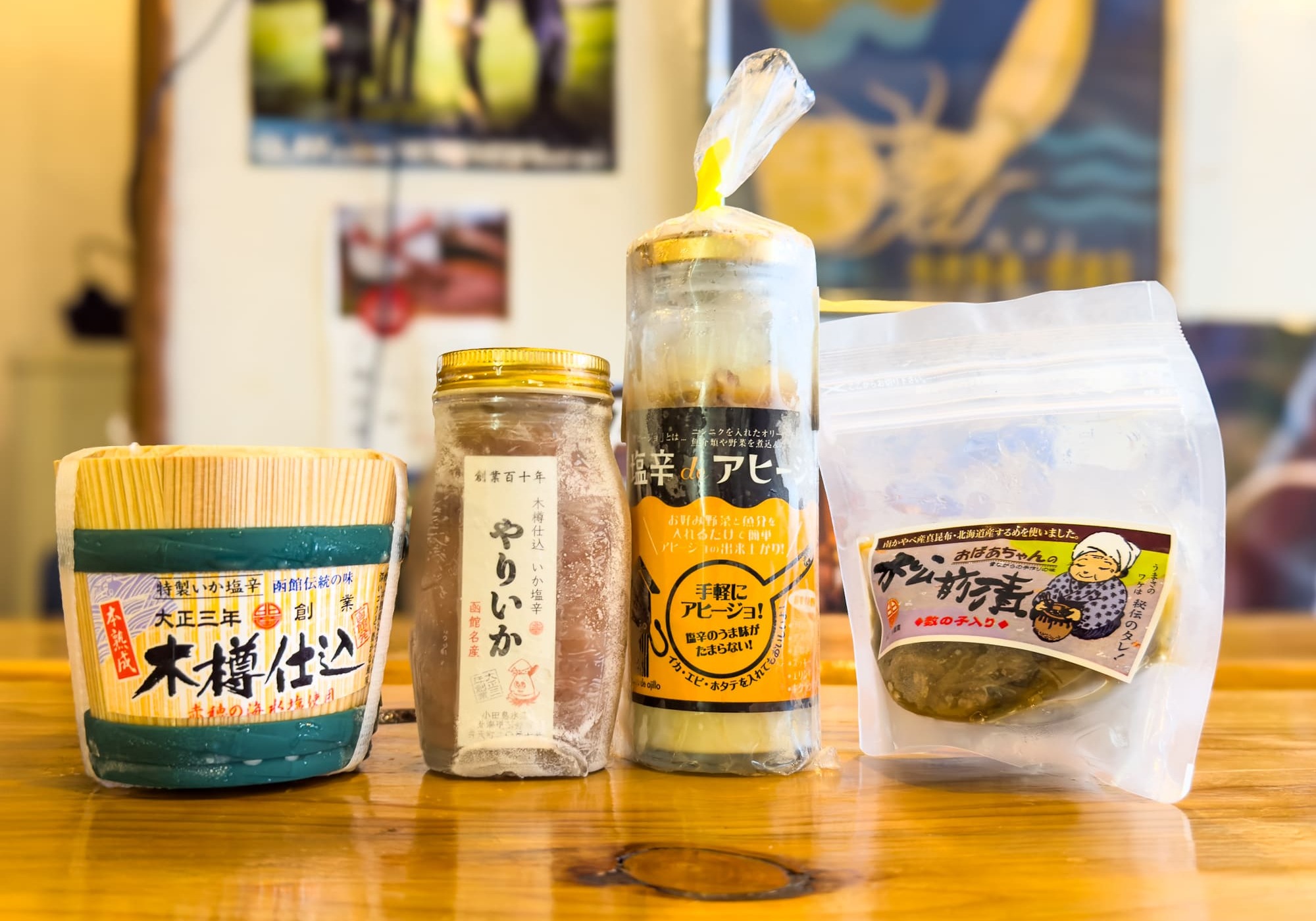
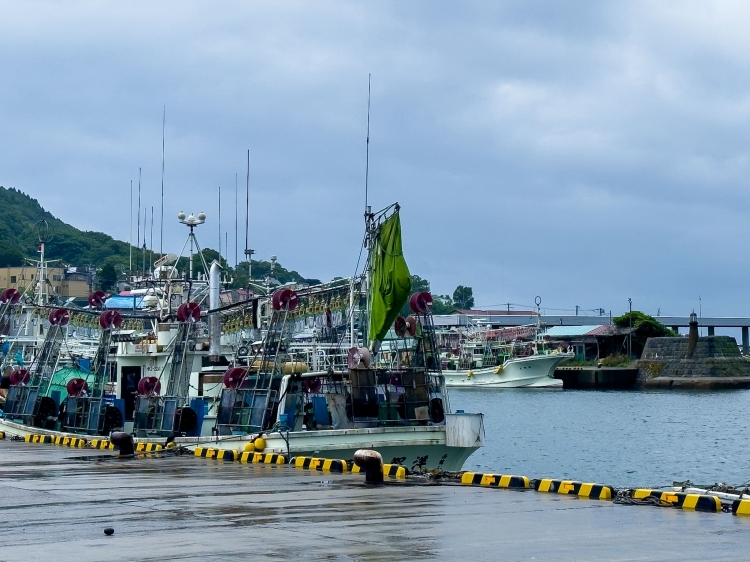
Squid fishing boats moored at Hakodate Fishing Port.
Hakodate Fishing Port is located at the southeastern end of Mt. Hakodate. Hakodate Bay and its surrounding areas have long been known as a good natural fishing ground. After the improvement work on Hakodate Fishing Port was completed in June 1900 by Isamu Hiroi, known as the father of harbor engineering, the port has played an important role as a fishing base and a logistics base.
The numerous boats with uniquely shaped lights hanging from them that are anchored in the harbor are all squid fishing boats. The lights that sparkle in the night sea of the Tsugaru Strait, known as fishing lights (isaribi), are a seasonal sight that colors Hakodate from summer to late autumn, when squid fishing is at its peak. Many squid fishing boats depart from Hakodate Fishing Port, so this area has always been associated with squid.
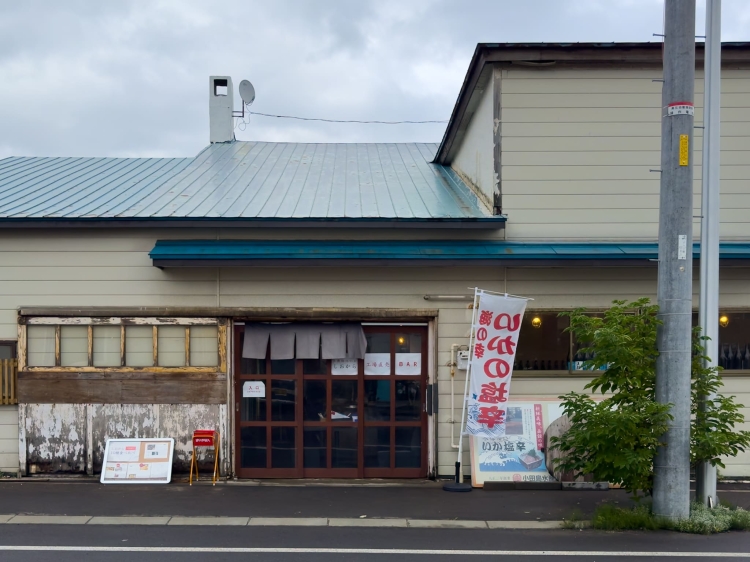
Shiokara is so familiar that the name "Ikasashi, Shiokara, Squid Somen" is mentioned in the lyrics of "Ika Odori," a song known to all Hakodate residents. Odashima Suisan, located in Irifune-cho near Hakodate Fishing Port, is one of the companies that has been working with squid for a long time, and continues to convey the deliciousness of good old shiokara made using traditional methods to the present day.
The secret to the deliciousness of the fermented food "Shiokara"
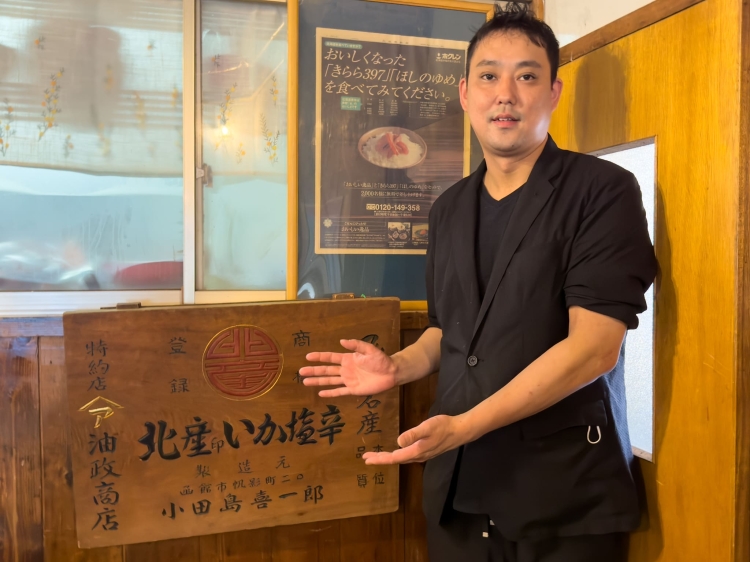
To the left of Odashima-san is the "Odashima Suisan" sign from when the company was first founded.
We were given a tour of the factory by Akiyoshi Odajima, the fourth-generation sales manager, and learned about the shiokara manufacturing process.
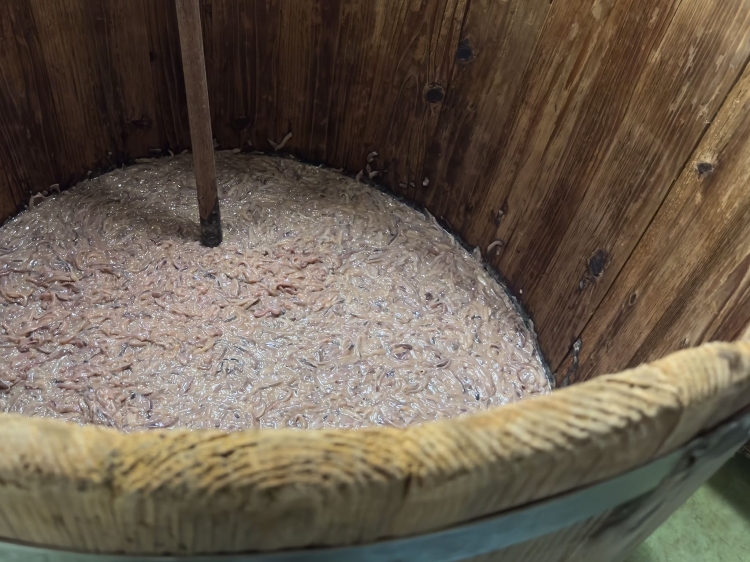
Stir at a steady rhythm, incorporating air, until the mixture is combined.
Shiokara is made by cutting out the ears, body and tentacles of squid with a blade called a makiri, placing them in a wooden barrel, and leaving them to sit for about a week while stirring with goro (squid innards), salt and seasonings, allowing them to ferment slowly.
The wooden barrels used are made from Akita cedar. Currently, there are no craftsmen to make new ones, so they continue to use the ones they already have while taking good care of them.
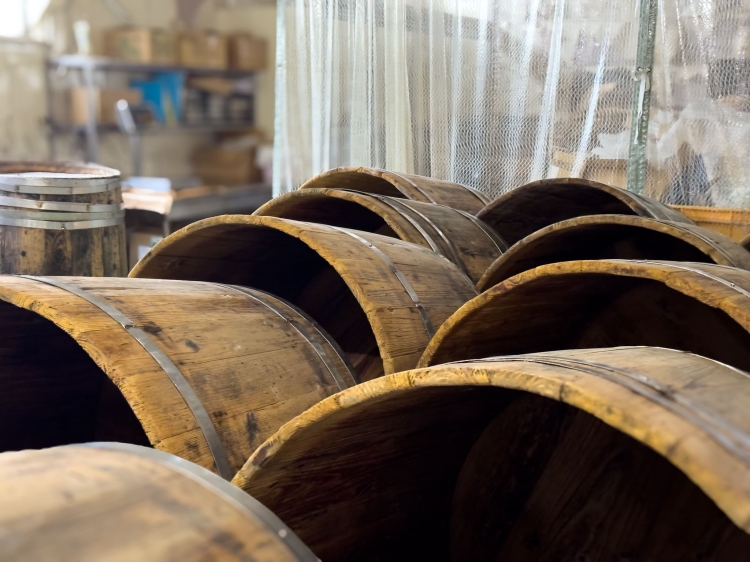
"The barrels that have been used for many years are home to bacteria that ferment the squid. Because shiokara is a fermented food, the bacteria grow along with the barrels, resulting in our store's unique, mellow, cherry-pink shiokara." "In the field of fermentation, it is common for bacteria to live on tools and buildings and become the key to flavor, and this is also the case in the 'kuratsuki' (warehouses) of sake breweries. These fermentation barrels are a treasure to us," Odajima explained, looking at the rows of barrels.
A change in thinking about shiokara was a turning point
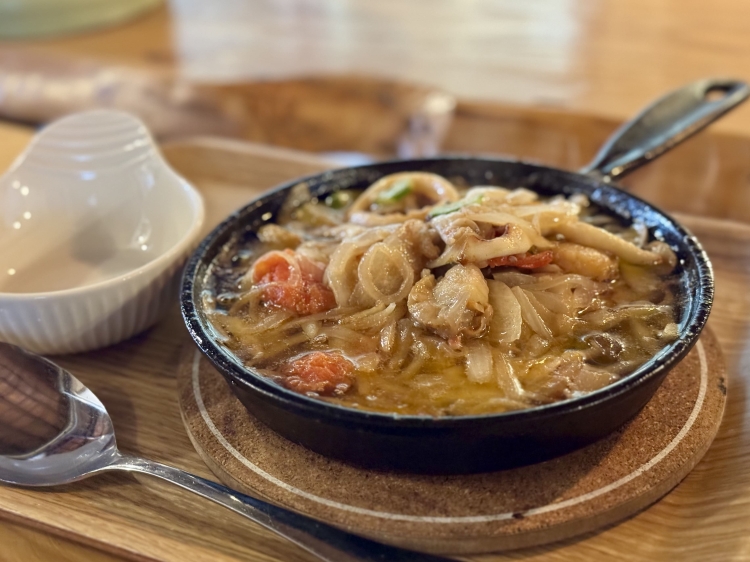
Ajillo made using salted ajillo base.
Although Shiokara is made with great care, Odashima thought that "it has the image of being something that goes well with alcohol, something that old men eat, and something with a strong flavor." So, with the desire to "allow more people to enjoy Shiokara in a casual way," a product was born.
Odashima Suisan's shiokara is known for being full of flavor, with little odor, and a mellow, easy-to-eat taste, all because the squid is slowly fermented. This led them to wonder if it could be used in a similar way to anchovies. They then released their ajillo seasoning, "Shiokara Ajillo," which uses shiokara instead of anchovies, and it was well-received. The umami of shiokara not only goes well with seafood ingredients such as shrimp and scallops, but the aroma of the ingredients and spices also enhances the flavor even more.
A bar spreads information about the potential of Shiokara

Dining area at Shiokara Bar.
Furthermore, inspired by comments from customers during tastings at the direct sales store such as "I'd like to drink alcohol with it," and "I'd like to eat it with rice!", a food and beverage space called "Shiokara Bar" was opened at the direct sales store next to the factory in 2022. You can also feel the history of "Odashima Suisan" with the atmospheric exterior built in the Meiji period and a counter made from wooden barrels that were used at the factory.
The shop is visited by many locals as well as tourists, as visitors can compare the taste of various painstakingly made shiokara, and experience new ways of eating shiokara, such as paella and pasta, as suggested by Odashima.

A tasting set that lets you compare 13 types of shiokara, Matsumae pickles, and other delicacies.
The especially popular Shiokara Tasting Set allows you to sample almost all of the Shiokara and delicacies produced by Odashima Suisan, and in the past, there were children who downed three pieces in one go. "Of course, it goes well with alcohol, but many people also eat it with white rice in the morning or lunchtime," says Odashima.
The signature product, "Wooden Barrel Preparation," has a beautiful cherry blossom color and a smooth, mellow taste with a distinct umami flavor. It has a soft, fluffy texture, no unpleasant odor, and the elasticity and chewiness of the squid make it very easy to eat.
There are also many other varieties of shiokara to enjoy, such as those with cartilage added to add texture, those with kanzuri that has been fermented for three years, and those with a salt concentration increased to 20% to maximize the power of the fermenting bacteria and enhance the flavor.
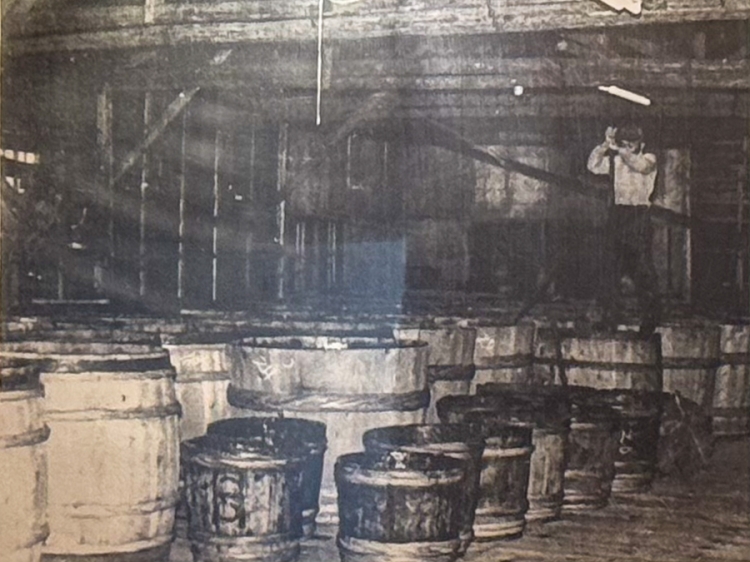
A photo displayed inside the bar shows how shiokara was made in the past.
Odajima Suisan actively accepts tours from local elementary school students and teaches them about squid and shiokara, which have long supported Hakodate's industries. Third-generation president and president, Odajima Takashi, said, "After the tour, some children wrote letters saying, 'I'm so glad that the first shiokara I ever ate was from here.' These days, young people may not be so keen on shiokara, but there's nothing more satisfying than hearing such words from someone who has actually tried it."
Odashima Suisan's shiokara was featured in supplementary teaching materials for elementary schools in 2023 because it preserves the traditional method of making shiokara using squid, a fish from Hakodate, and the method of making shiokara from it. "It may be our mission to continue making products and passing on the traditional methods of making them," says Takashi.
While maintaining the same flavor, Odashima Suisan has gained many fans through its bar. If you step into the store, you will be able to interact with the locals and discover a new charm of shiokara that is different from what you've experienced before.
Odashima Fisheries/Shiokara Bar
Address: 20-7 Bentencho, Hakodate, Hokkaido
電話:0138-22-4312
Access: 5 minutes walk from Hakodate City Tram "Dokkumae"
HP: https://odajimasuisan-hakodate.com/
SNS: https://www.instagram.com/odajimasuisan/
*For details on opening hours and holidays, please check the link above.




